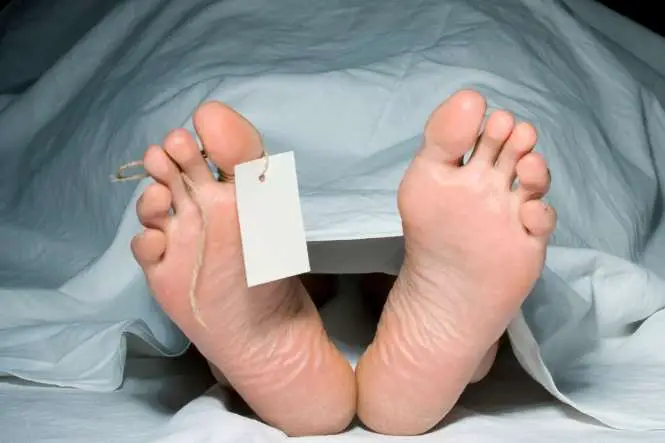The four manners of death are the four main categories in which death can occur that a pathologist will look for when he or she is examining the deceased.
Four Categories of Death
These four categories of death are:
- Natural Causes: Quite simply when the body ceases to function of its own accord or if there are mitigating medical factors such as terminal illness, heart disease or the like, which would bring about death – this is generally referred to as death by natural causes.
- Homicide: The taking of one human life by another human being by means of pre-meditated murder. The term pre-meditated means to have purposely planned and executed the murder of another human being in cold blood whilst trying to elude capture by the authorities.
- Accidental Death: As the term would suggest the death of an individual by means other than natural death, murder or suicide. Accidental death can sometimes be manslaughter – murder but committed out of an involuntary act of violence towards another. Likewise accidental death can also be categorised as death by misadventure. This means that the victim has died by accident either whilst doing something they should not have been doing or by taking risks that would put them in mortal danger. A lot of extreme sports participants have died and their deaths have been classified as death by misadventure because of the extreme nature of their pastimes.
- Suicide: The deliberate taking of one’s own life due to extreme emotional distress often brought about by severe depression. Suicide is neither accidental nor is it classified as death by misadventure simply because the individual has set about on a course of action that would end with their own inevitable death. Normally this would occur by means of drug overdose, the cutting of one’s wrists to induce uncontrollable bleeding, or indeed stepping out in front of a moving vehicle.
Why Categorise Death?
These four reasons for death are often called upon as a means test for a pathologist when he or she is required to determine how a person died. They will look at the evidence both physical and trace to try and determine which category best fits the manner in which the deceased passed away.
Of course if there are visible wounds such as a gunshot wound or a knife wound then the most likely cause of death would be attributed to Homicide – or Murder. It could be possible however that accidental death is the most likely explanation as many people have died from firearms related wounds whilst cleaning or maintaining them. For the most part the pathologist will concern themselves with how the victim died and will use this as a means upon which to base their final findings.
Throughout all of these types of death an autopsy will have to be performed in order to provide concrete proof that the pathologist – and indeed the police officers involved with investigating the death – is correct in their assumptions.
Likewise their findings will also be presented to a coroner who will reside over an inquest and will finally be able to agree on the cause of death so that the family of the deceased may bury their loved one. We have two features about the work of the forensic pathologist and about forensic pathology in general, take a look and leave a comment!

